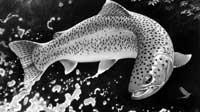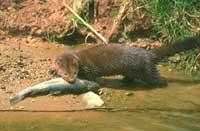Will the European mink last?
2003/07/01 Imaz Amiano, Eneko - Elhuyar Zientziaren Komunikazioa | Atxotegi Alegria, Uhaina - Elhuyar Zientziaren Komunikazioa Iturria: Elhuyar aldizkaria
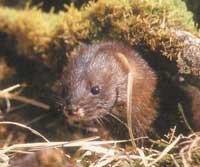
A century and a half ago, in many European territories a European and quite abundant mink could be found. Since then it has been disappearing from these areas due to ignorance.
At present, the European mink remains at few points in the old distribution. It has completely disappeared in countries like Switzerland, Germany, Finland or Poland. In eastern Europe, in some regions of Belarus and the Baltic, as well as on the coasts of Ukraine and Georgia and Romania, you can still find mink populations. In western Europe, however, it is only found in the Fields of France, the Basque Country, La Rioja and Burgos.
Regarding Hego Euskal Herria, the European mink has been observed in the rivers Oria, Deba, Agauntza, Leitzaran and Abaloz de Gipuzkoa; in Bizkaia, in the rivers Artibai, Oka, Ibaizabal, Nerbioi and Rabayayas Abayala, in the rivers Aragala or Data is being collected at Iparralde.
Has suffered several attacks
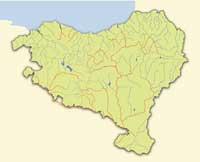
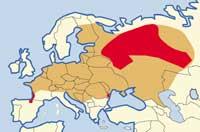
Although researchers do not know the cause of the disappearance of the European mink, they have found several. Habitat loss and land degradation are the main causes of the decline of the water mink, which is due to human deposition and/or pollution.
In fact, XX. Throughout the 20th century, man has covered and contaminated numerous wet areas. The modification of the channeling and drainage of several channels, the alteration of the water table and the disappearance of the riverside vegetation have had consequences in the survival of this animal. On the other hand, the construction of new roads, roads and buildings has been very diverse, which has also affected the European mink. We must also take into account the persecution suffered in his day by hunters and traps.
But another factor that has influenced the decline of the European mink has been the arrival of the American mink.
With the American mink on the duke
The American mink was brought to Europe about 80 years ago for the value of its skin and nurseries were opened in numerous villages in Europe. However, several minks originated and generated abroad have escaped or freed from nurseries and have been approaching the aquatic media in recent years.
The American mink is very similar to the European one, but it is bigger than the European one and, by exploiting the same ecological corner, is appropriating the places of residence of the European mink, so it is also preventing its reproduction.
As it is a harmful species that is expanding dramatically, several campaigns have been organized in France to poison it. However, these campaigns have a problem: there is a great risk that the European mink will also die accidentally.

In addition, researchers believe that American mink is contaminating the Aleutian Islands disease virus. He is able to overcome this disease but the European mink is not. Of course, this also has consequences on the disappearance of the European mink.
Research for European Mink Protection
In the Gipuzkoan Goierri Valley, Iñaki Irizar and his team have investigated the minks. Thanks to the Gerriko Ikerlan scholarship and the collaboration of the Provincial Council of Gipuzkoa. First, each of the captured minks is diagnosed with their health status and genetic analysis is also performed. Some loose hairs are enough to perform a genetic study. Includes information on the status of the species population.
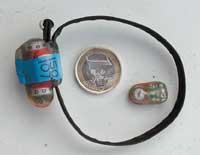
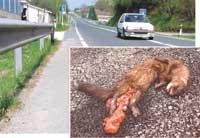
After these analyses, animals are marked by microchip and returned to their environment. Thanks to the radio transmitter, biologists take care of the minks for four months. The information collected during these months after the collection of the necessary data, allows defining the measures to be taken to protect the European mink.
Inazio Garin and his team from the University of the Basque Country have investigated the use of mink in the territory in Urdaibai. They have also taken advantage of radio transmitters.
A few years ago several French biologists conducted similar research on two rivers of the Landes. Eleven European minks were captured and submitted to the same studies.
Measures taken
Several EU countries are taking steps in recent years towards the recovery and protection of this species. The Provincial Councils of Castilla-León, La Rioja and Álava, for example, since 2001, thanks to the grants of the Life programme of the European Union, work together on three projects to support the European mink. Several campaigns for the survival of this species have also been organized in Iparralde and France.
Researchers continue to study the European mink and the evolution of their populations. On the other hand, the American mink is also being investigated by groups that want to find out where it lives, whether it is infecting any viruses and the danger posed by the occupation of European mink habitats. They have also called for help from society to protect this critically ill mammal.
European Mink (Mustela lutreola)
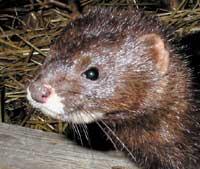
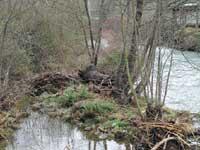
Dark brown mustard. A white spot on the upper and lower lips. It has about 45-60 cm (including tail) and a maximum weight of one kilo.
- Biology: zeal, January-February. The young are born in spring ( 10 g) and separated from their mother in September.
- Food: carnivorous, mainly frogs and small mammals, as well as fish, chorizos and insects.
- Customs: night, with more activity at dusk. The daylight shelter is accessed (between the root, the piece of wood or the branch of the trees). Lives in clean aquatic environments.
Ecoaction? As for minks, there is a strange event that occurred in Teruel, which we should say weird or unfortunate. In fact, on July 31, 2001, several people went to the American mink nursery in the town of La Puebla de Valverde and opened all the cages to free the imprisoned animals. It seems a nice action, but regrettable from the ecological point of view. The American mink is an allochthonous, external species. We know that in Teruel there is no European mink, but we know that the latter is spreading by nature to the south, and now it will have another obstacle on its way. In addition, with or without the presence of European mink, the introduction of any foreign species breaks the ecological balance. Ecologistas en Acción, coordinator of environmental associations in Spain, immediately explained that they have nothing to do with the action. |

Gai honi buruzko eduki gehiago
Elhuyarrek garatutako teknologia



